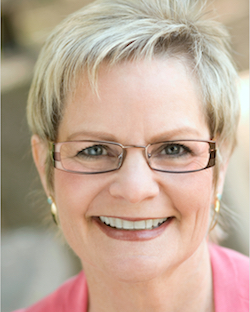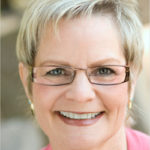
What will be different about members of the Baby Boom generation when they start to need aid and assistance with their activities of daily living?
On the surface, not much. They are living longer and healthier but eventually will encounter many of the same challenges that previous generations have experienced: cancer, heart problems, falls, diabetes, etc. Many of these conditions can be treated at home or in a residential facility, with supplemental aid provided by family members.
With the baby boomers, however, family members will be in shorter supply. The Pew Research Center found that the rate of childlessness among boomers is around 20% – double what it had been in previous generations. In other words, one in five boomers will not have adult children to help them when independent living becomes difficult or impossible. I call these childless boomers – whether married or single – the “Solo Agers.”
Adult children won’t be there to help Solo Agers find caregivers or a new place to live. If Solo Agers continue to live in their private homes, as most people are inclined to do, then any number of problems can set in: mismanagement of medication, improper treatment of wounds, poor nutrition, susceptibility to scams, isolation and loneliness.
These Solo Agers will need residential care, although they may not accept it easily. And with no adult children to do the research necessary to find a suitable new community and then manage the move, the transition becomes even more problematic. What can be done?
First, it’s important to look at the interests and needs of this segment of the boomer population. Baby boomers without adult children and grandchildren most often are white, highly educated and have deep roots in the United States. Many are reasonably affluent. Solo Agers’ extended families often are small and may live far away.
Similar to their parents and grandparents, Solo Agers want to stay as independent as possible for as long as possible. They also are interested in a healthy lifestyle, based as much as possible on outdoor living – at least in the warmer months. They want choice – in as many areas as possible. They have been the masters of their universe for a long time, and they will not easily give up that privilege. They may not have family around, but they have friends, and those friends are important to them. They also will want to continue to pursue learning and development, even as they approach their centenary mark.
Solo Agers also need to arrange future legal guardianship for themselves – someone who will take over in a fiduciary capacity if they are unable to make decisions for themselves. That person may be a relative or a friend or even a professional fiduciary or private guardian. Of course, everyone needs the legal protection of a healthcare directive and an estate plan, but Solo Agers have a heightened need to have those documents in place while they still are relatively young and healthy, because no adult child will be rushing in from the hinterlands to provide that assistance and guidance.
Owners and managers of residential retirement communities have the opportunity to start now to plan for this influx of people without the traditional family support. The first hurdle will be selling the concept. What percentage of your residents walked in on their own, without the assistance (cajoling?) of adult children? I’ll bet very few. How will you market to this growing segment? With attention to the needs listed above, the following points may be helpful as you put together your strategy.
For developers:
- Build communities with lots of common spaces and indoor-outdoor areas.
- Furnish the common spaces with many small seating areas for intimate discussions.
- Get rid of the pastel color schemes in favor of bold, clean lines and strong colors – think ski lodge, not Victorian parlor.
- Create separate, smaller wings that mimic neighborhood cul-de-sacs; these can be marketed to groups of friends who want to stay together.
- Create units that can be shared – not just by a traditional couple, but also by friends/roommates.
- Provide opportunities for true inclusion in decision-making and management of the community.
- Create spaces for gardening and walking paths.
- Create spaces for cultural events.
For operators and managers:
- Create an environment of engagement and respect – the way you treat your employees will be mirrored in how your employees treat your residents.
- Create a learning environment – book clubs, lectures, trips to cultural events.
- Include as many as possible opportunities to get outside, and include staff members who are adept at outdoor activities.
- Encourage deep and meaningful relationships among staff and residents.
- Provide visiting, onsite legal advisers and financial advisers.
- Encourage volunteering, and provide opportunities for residents who are able to be out in the larger community.
- Require and ensure that every resident has a healthcare directive, a will and an estate plan that is updated every three years.
- Provide choices in every possible arena: dining, schedules, activities, transportation, excursions, communication.
- Ask your staff members what they need.
- Ask your residents what they want.
In subtle and not-so-subtle ways, the baby boomers are a very different population cohort than we have ever seen before in senior residential communities, and many of them will not have family nearby – or at all. As developers and operators of senior residential communities, you will need to find ways to reach out to these Solo Agers. Only a few forward-thinking ones will come to you. They will need you, but they don’t yet know it.
There will be competition for their dollars and their loyalty. Only by starting early to think about these issues will you be able to provide the kind of final sanctuary that Solo Agers will need, and a strategy to attract them. Think out of the box on this one – it will be required for success!
Sara Zeff Geber, Ph.D., is a speaker, author, retirement coach and the founder of LifeEncore. She has a special interest in a group she calls “Solo Agers,” people aged more than 50 years who do not have children and aging alone. Her book “Essential Retirement Planning for Solo Agers: A Retirement and Aging Roadmap for Single and Childless Adults” will be released April 15.


